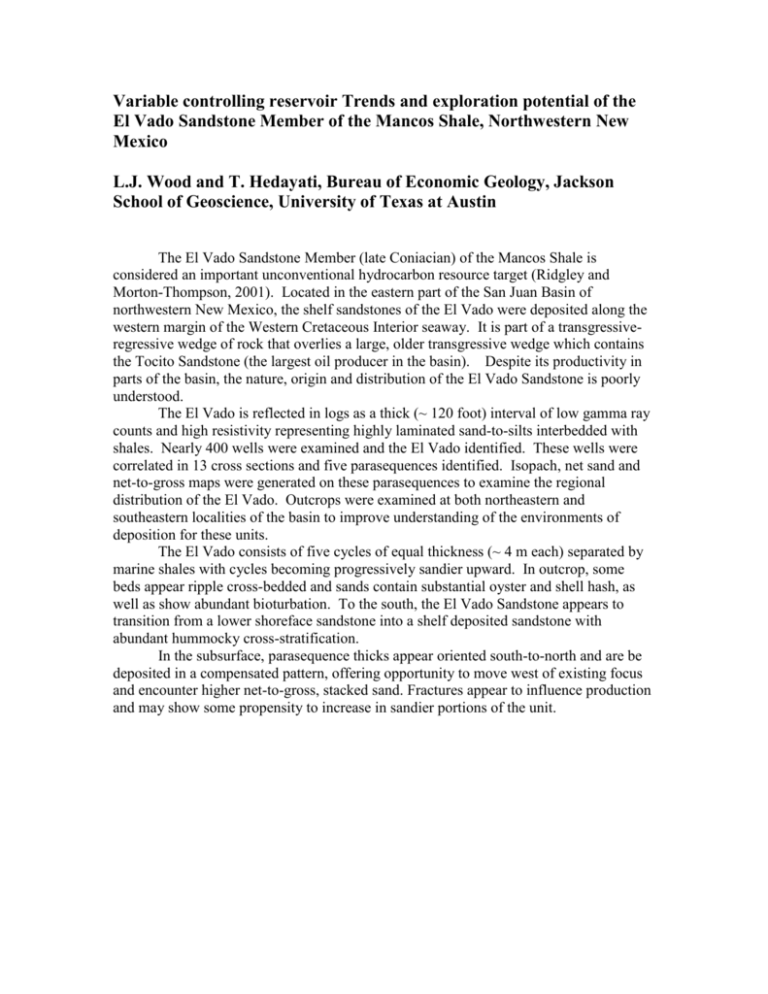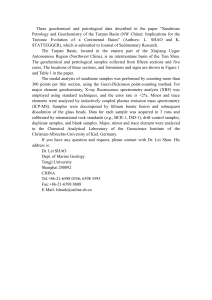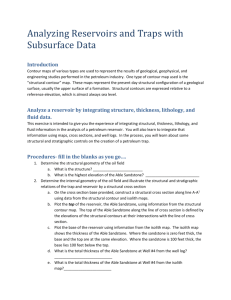abstract - Bureau of Economic Geology
advertisement

Variable controlling reservoir Trends and exploration potential of the El Vado Sandstone Member of the Mancos Shale, Northwestern New Mexico L.J. Wood and T. Hedayati, Bureau of Economic Geology, Jackson School of Geoscience, University of Texas at Austin The El Vado Sandstone Member (late Coniacian) of the Mancos Shale is considered an important unconventional hydrocarbon resource target (Ridgley and Morton-Thompson, 2001). Located in the eastern part of the San Juan Basin of northwestern New Mexico, the shelf sandstones of the El Vado were deposited along the western margin of the Western Cretaceous Interior seaway. It is part of a transgressiveregressive wedge of rock that overlies a large, older transgressive wedge which contains the Tocito Sandstone (the largest oil producer in the basin). Despite its productivity in parts of the basin, the nature, origin and distribution of the El Vado Sandstone is poorly understood. The El Vado is reflected in logs as a thick (~ 120 foot) interval of low gamma ray counts and high resistivity representing highly laminated sand-to-silts interbedded with shales. Nearly 400 wells were examined and the El Vado identified. These wells were correlated in 13 cross sections and five parasequences identified. Isopach, net sand and net-to-gross maps were generated on these parasequences to examine the regional distribution of the El Vado. Outcrops were examined at both northeastern and southeastern localities of the basin to improve understanding of the environments of deposition for these units. The El Vado consists of five cycles of equal thickness (~ 4 m each) separated by marine shales with cycles becoming progressively sandier upward. In outcrop, some beds appear ripple cross-bedded and sands contain substantial oyster and shell hash, as well as show abundant bioturbation. To the south, the El Vado Sandstone appears to transition from a lower shoreface sandstone into a shelf deposited sandstone with abundant hummocky cross-stratification. In the subsurface, parasequence thicks appear oriented south-to-north and are be deposited in a compensated pattern, offering opportunity to move west of existing focus and encounter higher net-to-gross, stacked sand. Fractures appear to influence production and may show some propensity to increase in sandier portions of the unit.






